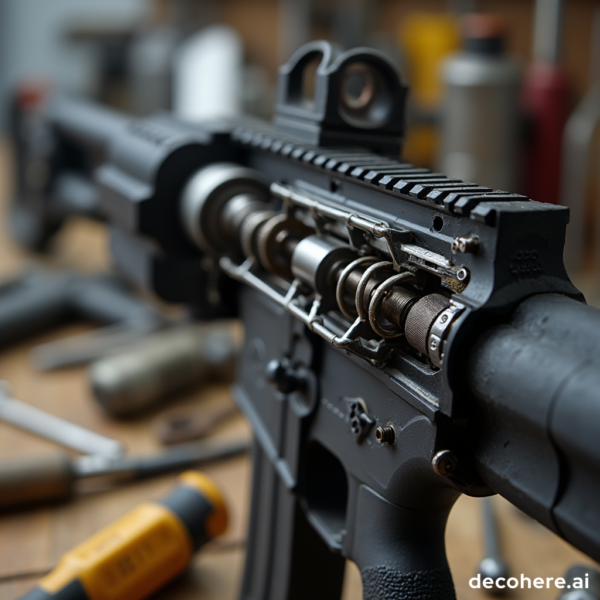Inside Tesla’s Global Manufacturing: Locations, Capabilities, and Access
Introduction: Tesla’s Manufacturing Footprint
Tesla’s rapid growth as a leading electric vehicle manufacturer is powered by a global network of advanced production facilities. With factories strategically located in the United States, China, and Germany, Tesla is able to meet regional demand, optimize its supply chain, and continually innovate on a massive scale. Understanding where Tesla cars are manufactured provides valuable insight into the company’s operational strategy, product availability, and global impact. This article explores each major Tesla factory, their capabilities, and how you can access the vehicles and benefits stemming from this global manufacturing infrastructure.
Overview of Tesla’s Major Manufacturing Locations
As of 2024, Tesla operates several large factories worldwide, often referred to as “Gigafactories.” Each facility contributes to Tesla’s mission of accelerating the world’s transition to sustainable energy by focusing on vehicle production, battery technology, and energy products. The current key car manufacturing locations are:
- Fremont Factory – California, USA
- Gigafactory Nevada – Nevada, USA
- Gigafactory Texas – Austin, Texas, USA
- Gigafactory Shanghai – Shanghai, China
- Gigafactory Berlin – Grünheide, Germany
In addition to these, Tesla maintains supporting factories in New York and Lathrop, California for energy products and storage components [1] [4] .
Detailed Breakdown of Each Factory
Fremont Factory (California, USA)
The Fremont Factory is Tesla’s original vehicle manufacturing hub. Located in California, this facility produces four key models: Model S, Model X, Model 3, and Model Y. In 2023, Fremont set a new company record by manufacturing nearly 560,000 vehicles-a significant increase from its pre-Tesla output [5] . The site employs about 22,000 people and serves as a central pillar in Tesla’s North American distribution network [4] .
How to Access:
If you’re interested in purchasing a vehicle manufactured at Fremont, visit Tesla’s official website and select your preferred model. Vehicles built here are typically delivered across the United States and Canada. For the most accurate local availability, you can contact your nearest Tesla showroom or search “Tesla showroom near me.”

Source: axleaddict.com
Gigafactory Nevada (Storey County, Nevada, USA)
Known as “Gigafactory 1,” this facility is responsible for producing battery packs, drivetrains, and the Tesla Semi truck. It also manufactures components for Tesla’s Powerwall energy storage solutions. The Nevada site is notable for its commitment to renewable energy-much of the factory is powered by on-site solar, wind, and geothermal sources [3] . While the primary vehicle assembly occurs elsewhere, Nevada is essential for the components that power Tesla’s entire EV lineup.
How to Access:
Tesla’s energy products and vehicles using batteries from Gigafactory Nevada are available through the official Tesla website and authorized resellers. You may also contact Tesla Energy for home or business battery solutions.
Gigafactory Texas (Austin, Texas, USA)
Opened in 2022, Gigafactory Texas (also known as Giga Austin) is a centerpiece of Tesla’s next generation of factories. It is responsible for producing the Model Y for the eastern United States and the Cybertruck, Tesla’s highly anticipated electric pickup. The Austin facility is one of the most advanced automotive plants in North America, employing around 12,000 people as of 2024 [4] .
How to Access:
To order a Model Y or Cybertruck manufactured in Austin, you can customize and purchase directly on Tesla’s official site. For updates on Cybertruck availability, use Tesla’s official channels or sign up for notifications through your Tesla account.
Gigafactory Shanghai (Shanghai, China)
This site represents Tesla’s first major expansion outside the U.S. Gigafactory Shanghai produces the Model 3 and Model Y, primarily serving the Chinese and broader Asian markets. The facility is also a key export hub for Tesla, delivering vehicles to Europe and other global regions [3] . With over 20,000 employees, Shanghai’s Gigafactory has played a central role in making electric vehicles more accessible in Asia.
How to Access:
Consumers in China and nearby countries can order vehicles directly through regional Tesla websites. Exported vehicles are distributed through local Tesla stores and delivery centers. For the latest updates, check Tesla’s official Chinese website or contact a local Tesla dealer.
Gigafactory Berlin (Grünheide, Germany)
Tesla’s Berlin Gigafactory became operational in 2022 and focuses on manufacturing the Model Y for the European market. The factory is designed with sustainability in mind, featuring advanced environmental practices and a production capacity of up to 500,000 vehicles per year [1] . With roughly 10,000 employees, it is a major employer in the region and a critical part of Tesla’s European strategy.
How to Access:
To order a Model Y from the Berlin facility, visit your country’s official Tesla website. Deliveries typically cover the EU and neighboring countries. For test drives or more information, locate your nearest Tesla showroom in Europe using official Tesla resources.
Why Tesla Locates Factories Worldwide
Tesla chooses strategic locations for its factories to balance several key factors:

Source: autobuzz.my
- Regional Demand: Factories are positioned near major markets to reduce shipping time and logistics costs.
- Supply Chain Optimization: Proximity to parts suppliers and raw materials streamlines production and reduces environmental impact.
- Regulatory Support: Many regions offer incentives for electric vehicle manufacturing, including tax breaks and infrastructure support.
- Innovation and Sustainability: Localized production allows Tesla to experiment with new manufacturing techniques and integrate renewable energy solutions.
For example, Gigafactory Berlin was established to serve Europe’s rapidly growing EV market, while Gigafactory Shanghai opened to meet strong demand in China and Asia. This regional approach helps Tesla adapt quickly to local market needs and regulatory changes [3] .
Step-by-Step: How to Buy a Tesla Car Manufactured in Your Region
Accessing a Tesla vehicle manufactured at one of these global factories is a straightforward process. Here’s how you can proceed:
- Visit Tesla’s Official Website: Start by navigating to the official Tesla website for your country. Use the main site or search “Tesla [your country]” for localized options.
- Choose Your Model: Select the vehicle and configuration you want. The website will indicate which models are currently available in your region and may specify estimated delivery times based on factory production schedules.
- Place Your Order: Complete the order process online. You can customize your vehicle’s color, features, and financing options. Tesla’s system will assign your order to the appropriate factory based on your delivery location.
- Track Your Order: After purchase, you can track your vehicle’s production and shipping progress through your Tesla account. Delivery times may vary depending on regional demand and shipping logistics.
- Contact Local Tesla Showrooms: For hands-on experience, locate the nearest Tesla showroom or delivery center. Staff can provide additional details on factory origin, vehicle options, and test drives.
If you are unable to find specific local information online, consider calling Tesla’s customer support or visiting a showroom in person. Staff can clarify which factory your car will come from based on your configuration and location.
Additional Considerations: Factory Expansion and Future Availability
Tesla continues to expand its global manufacturing network. A new Gigafactory in Mexico is under development, with production expected to begin in the near future. This facility is designed to support growing demand in North and South America, further strengthening Tesla’s regional presence [1] .
Additionally, Tesla’s manufacturing strategy prioritizes vertical integration-meaning many components are designed, engineered, and produced in-house. This gives Tesla flexibility to adapt quickly to new technologies and market trends.
Challenges and Opportunities in Tesla’s Global Manufacturing
While Tesla’s worldwide factory network enables rapid growth and innovation, it also presents unique challenges. Local regulations, labor market conditions, and supply chain disruptions can affect production timelines. Tesla addresses these risks by diversifying its factory locations and investing in local talent and infrastructure.
For consumers, this means that model availability, delivery times, and pricing may vary depending on regional factors. If a specific vehicle or configuration is not immediately available in your country, you can often sign up for email notifications on Tesla’s website or consult with local showrooms for alternative options.
Summary: Leveraging Tesla’s Manufacturing Network
Understanding where Tesla cars are manufactured empowers buyers and enthusiasts to make informed decisions and take advantage of the latest electric vehicle innovations. From the pioneering Fremont Factory to the cutting-edge Gigafactories in Texas, Berlin, and Shanghai, each site plays a critical role in Tesla’s mission. By following the steps outlined above and utilizing official Tesla resources, you can access vehicles and services best suited for your region.
References
- [1] Tesla Outfitters (2024). Overview of Tesla Factories Worldwide.
- [2] Electrek (2021). Tesla factory locations: Where they are and could soon be.
- [3] My Tesla Accessories (2024). Where Are Tesla Cars Made?
- [4] Wikipedia (2024). Tesla, Inc. – Facilities.
- [5] Automotive Manufacturing Solutions (2024). Tesla’s gigafactory network and EV battery production blueprint.



